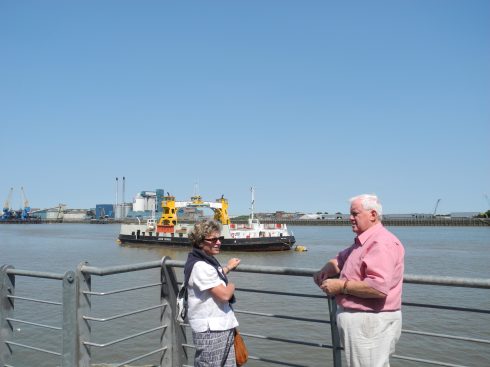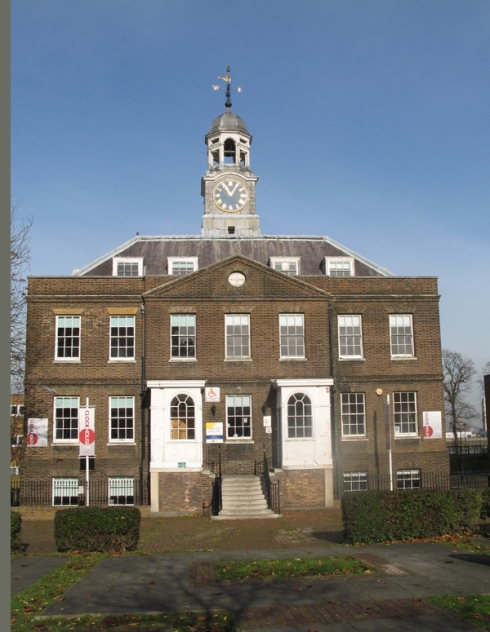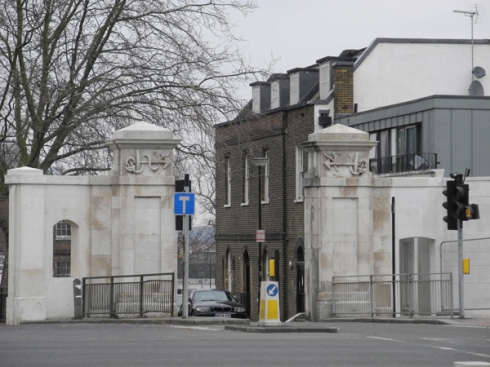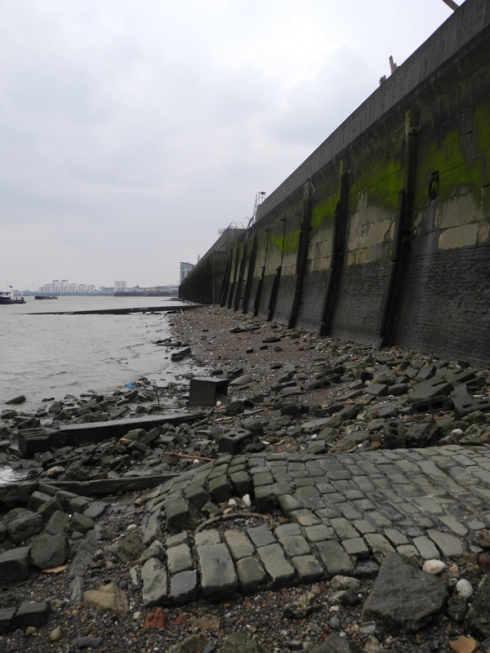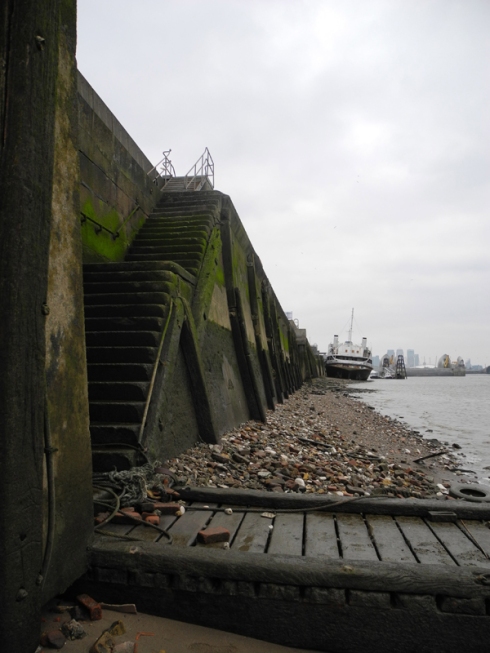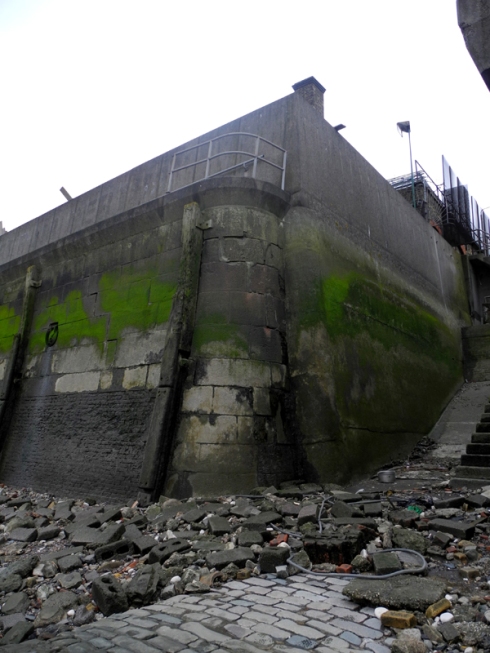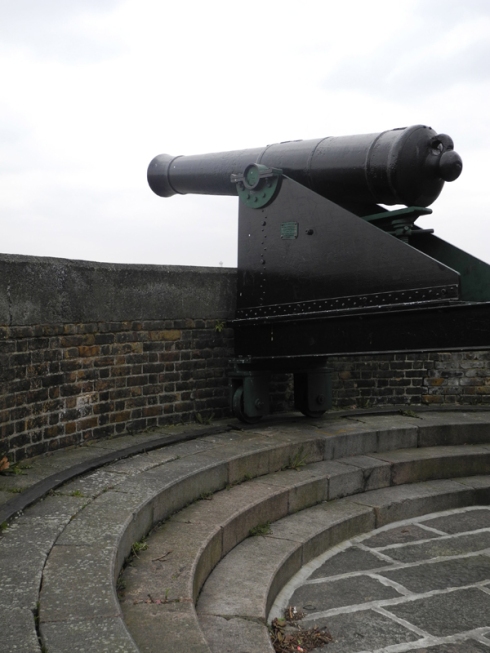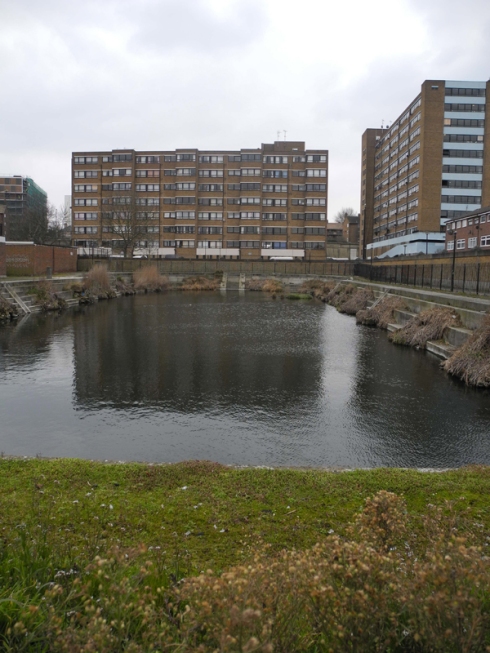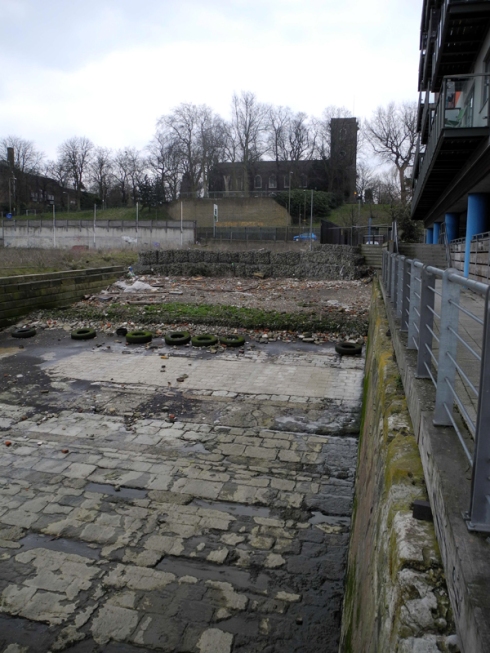You are currently browsing the tag archive for the ‘Henry Grace a Dieu’ tag.
I had expected that with Greenwich’s maritime heritage that the Royal Woolwich Dockyards would be celebrated. I was disappointed when I visited back in March that there were no information boards. The dockyards closed in 1869 but a remarkable number of remnants remain. Just west of the Woolwich Ferry and you can still see two slips and two docks which were used to make and repair the ships. Woolwich dockyard was opened in 1512 when work started on Henry Grace a Dieu for Henry VIII. There are several original buildings including The Clock House 1783-4, the Master Warder’s Lodging and guard house, school and police station.
I wrote to the Royal Borough of Greenwich suggesting that they should put up information boards. It wasn’t until Councillor John Fahy, who represents Woolwich Riverside ward, got involved that I have seen progress. I met with him and Leigh Pattison an officer with the council to walk the site of the dockyards. We had also picked up from Greenwich heritage Centre contemporary images of the prison hulks or floating prisons that were docked at Woolwich. Throughout the history of the dockyard convict labour was used initially for dredging the mud. In 1778 there were two ships off Woolwich with 632 convicts. The prison ships remained a presence here until the 1850s.
Two information boards will be placed along the river front to celebrate the rich heritage of the dockyard and also the Woolwich Free Ferry. Councillor Fahy said:
“It’s important that the river front is opened up and the River Thames walk is a real opportunity for people to appreciate the history. Obviously, with the tall ships coming back to the Royal Borough on a regular basis appreciation of the river and its history is important.”
At last Royal Woolwich Dockyard is getting the recognition it deserves.
The Royal Navy has long been considered this island’s first line of defence. The first royal dockyard was at Portsmouth 1496 built by Henry Vll. When Henry Vlll broke with the Catholic Church because of his divorce from Catherine of Aragon he feared a threat from the Catholic states of England and France. In 1513 Henry decided to build two new dockyards on the River Thames. Deptford and Woolwich were chosen because they were close to his palace at Greenwich. It is recorded that Henry visited the dockyards to see shipbuilding in progress. Woolwich was opened in 1512 when work started on Henry Grace a Dieu. A full list of all the ships made at Woolwich is available on the Kent History Forum website.
Having recently visited the Royal Deptford Dockyard I decided to visit Woolwich. There is still surprisingly much to see of the original dockyards although disappointing that there are no information boards for such an historically important site. I started my visit at Trinity Stairs which is accessible from Warspite Road. If you visit you need to check times of the tides.
Trinity stairs and causeway was built 1831-37 and originally was a coal wharf. There is still public access to the stairs. The granite stairs are very slippery but with care you can get to the river’s shore. The cobbled stone causeway is still in tact. On the western side you can see the Royal Iris Ferry in the 1840s an old warship the Warspite would have been moored in this spot. It was used to train and house poor boys 200 to 300 at a time. I did see some wood on the shore which looked as though it could have come from a ship from that period.
The dockyard would have been a self-contained community of highly skilled workers. Within the dockyard would be houses for senior offices, school and churches. Among the buildings that form Kingside Industrial Estate you can see ones that were part of the original dockyard. The building that is now the Co-operative Funeral Care was the dockyard school. Opposite is the original police station. The main entrance built 1780s is imposing and was being repaired and painted, however, apart from the rope motifs in the pillars there is nothing to indicate what they are. As you enter on the left hand side is the former Master Warder’s Lodgings and guard house. The Clock House 1783-4 is the most distinctive building and is now used as a community facility. After the Crimean War a Dockland Church (St Barnabas) was built in the dockyards 1856. The architect was Sir George Gilbert Scott. It was dismantled in 1932 and moved to the Progress Estate in Eltham.
On the riverside you can still see the two formidable cannons that are the Gun Battery. There is a landing place in front of this but this was inaccessible when I visited. Further along the Thamespath are the two dock areas which have been filled in with water. In the absence of any information boards they could be mistaken for some strange bathing areas. The Grade 11 listed docks are used by a local angling club. Further along are two slip ways. After the Napoleonic Wars slip covers were introduced which were iron fabricated covers that helped the wood to season. There were removed in the mid 19th Century and moved to Chatham Dockyard. Since then one has been adapted and used at the Dockside Outlet Centre in Chatham.
Planning permission has just been granted for some more riverside apartments in the area that was once the mast pond. All dockyards needed a mast pond where the timber would be soaked before used for shipbuilding.

